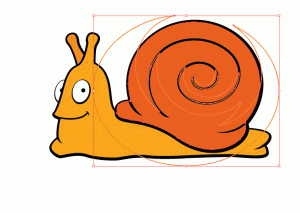
While planning the content for my 365 Days of Literacy for Kids – Fun, Easy & Completely Do-able, I remained committed to offering activities to parents and/or teachers that are, in fact, FUN, EASY & COMPLETELY DO-ABLE. I wanted parents/teachers to become excited about the activity on any given DAY. I wanted parents/teachers to know that a moment can change the course a conversation, a discourse or an entire day; that’s why I began the year, the entire month of January and my 365 Days of Literacy for Kids with POETRY. Poetry offers moments that celebrate our universe and each other. Poetry tells stories. Poetry expresses emotions. Poetry allows us to walk with our children into a moment that opens up a world of communication. I chose poems written by poets that your young children will encounter in later years, in upper grades… and poets that may already be recognized by older children. The key to LITERACY is WORDS. Use the key to communicate words, ideas, thoughts. Keep your children talking and thinking. I’ve received some very good feedback from parents, teachers, friends and relatives about the ease at which presenting a poem to their children has been… while in the car, at the dinner table, in a classroom or a during tuck-in bedtime moment. There is no complicated analysis or strategy going on here… just listening, talking, sharing. Building LITERACY SKILLS from the inside out. So here we go into DAY 8…
Ah. Let’s remember the wisdom of Jean-Paul Satre, “To read a poem in January is as lovely as to go for a walk in June.” Let’s talk about reading a poem today. Shall we stay inside and read that poem? Or head outside for a walk? Can we make the decision to stay all cozy inside AND head outside… at the same time? Of course not! But perhaps this little poem by 20th century novelist and poet Richard Wright gives us the option to do both…
Make up your mind snail!
You are half inside your house
And halfway out!
In this poem, Richard Wright experiments with the form of the traditional Japanese haiku, 3 lines and a specific number of syllables per line. Wright’s poem celebrates a little wonder of life… the snail. Read the poem to your children. Talk about the wonder of that little snail who carries its house from place to place, pulling itself back into its shell when disturbed, danger threatens or to escape the weather. The snail house also protects the snail from sharp objects or vegetation as it pulls itself from here to there. That house seems like a pretty good deal!
The voice, or speaker, of the poem comes along and notices the half-in, half-out snail. This is a tiny moment of life, a sliver of time… but that moment can make us hesitate, smile, think and talk to the snail. Hey! Make up your mind snail! Ask your child why that snail may be half-in and half-out. Is it feeling just a bit threatened? Is it getting ready to make a move? Is it enjoying the day? Is it finding a nice place in which to read a poem? It’s moments like these that poets capture… wonderful moments that so many of us rush by. It’s poems like these that teach children to notice life. It’s noticing life that counts when it comes to LITERACY. During the rest of today, focus on finding little moments and little details like the snail half-in and half-out of its house. It’s great fun! LITERACY is all about the WORDS… Written, Spoken, Felt.
Oh. Back to the original question. Is it possible for you to be half-in and half-out of your house… at the same time? You decide!




